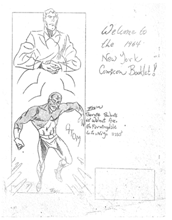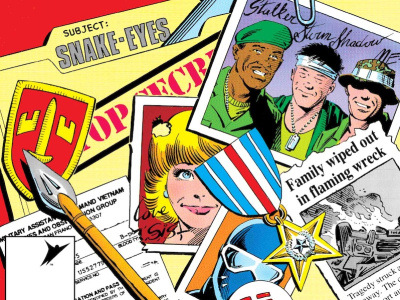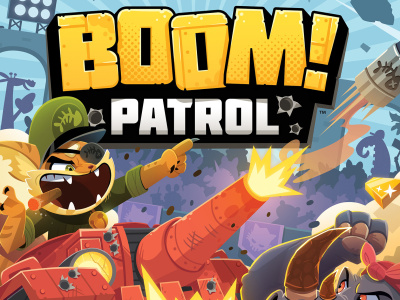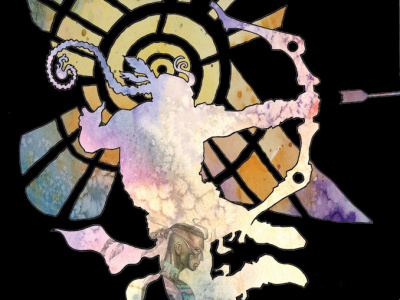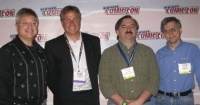
A panel to recall Phil Seuling and his early New York comic conventions, the first conventions with a national draw, was held in conjunction with the 2008 New York Comic Con. ICv2’s Milton Griepp moderated the panel with film producer Michael Uslan; Greg Goldstein, most recently VP-Entertainment at Upper Deck; Diamond’s VP Purchasing Bill Schanes; and DC Comics CEO and Publisher, Paul Levitz. In Part 1, Griepp introduces the panel, kicks off with a favorite Phil Seuling story, and asks the panelists about their first
Milton Griepp:
My name is Milton Griepp, and I’m the publisher of ICv2 and I’m here to host the panel on Phil Seuling’s early
Phil was a remarkable man in the history of comics. He not only founded one of the early conventions that became one of the national conventions, perhaps the first national convention. He also basically created the system that accounts for the comic stores in the
Before I introduce the panel, I’d like to tell you my favorite New York Comic Con story—this came from Walter Wang, a customer and later a competitor, and early guy at the shows. His favorite story, which he witnessed personally, was when Phil came across this kid in the hall near his conventions. He was selling comics on a blanket on the floor—hadn’t paid for a dealer table. Phil frowned on that kind of activity, so he picked up the guy’s comics and threw them down the stairs, and the kid said, “Why’d you throw my comics down the stairs?” and Phil said, “To break your fall.”
I asked Walter whether he actually threw the kid. He said Phil never actually hurt anybody, and they had a good laugh about it after the kid left, but he terrified him. He could be terrifying, but was also a very nice gentleman.
I’d like to introduce our panelists, beginning with Micheal Uslan. He’s Executive Producer for the film The Dark Knight, as he was on Batman and Batman Begins. Coming up he’s producing Will Eisner’s The Spirit, Shazam and The Shadow. He first attended a New York comic convention in July 1964 in the Broadway Central Hotel in the Bowery with about 199 other comic book fans. He was an early subscriber to RBCC, OTDB (later TCR) and Alter Ego. He believes he attended every New York comic convention through 1975 or 76.
Greg Goldstein, most recently Vice President of Gaming and Entertainment at Upper Deck, previously founder and President of Popmania, vice president at Acclaim, vice president at Activision, Sr. Vice President at Inkworks, and Brand Manager at Topps. Also a very early attendee of the New York comic cons.
Next, we have
To his left we have Paul Levitz, who currently is the President and Publisher of DC Comics, but in his prior life, he was very important to the history of the New York comic con. He attended the cons from ‘71 on and was on the con staff from 1971 to the mid-70s, running a fanzine sale table as a service to publishers, and then editing the program from ’73-’75. Phil was a friend when Paul‘s dad was a real estate agent renting him a store front for his used book store and comic business that he ran as a sideline to English teaching probably in ’69 or so. He’s been a fanzine publisher, has written comics, edited them, and is now Publisher and President of DC Comics where he’s been since before the first DC table at a con.
I’m going to ask each of the gentlemen to talk a little about their first New York comic convention--when it was and what it was like to be at that event.
Michael Uslan:
As the oldest person on the panel, I get to tell you about July 1964, supposedly the first comic book convention ever held anywhere. It was in the Bowery, at a time when the Bowery was not in any way, shape or form gentrified, in the Broadway Central Hotel, which later collapsed on itself.
My mother and father took me and Bob Klein to the convention. It was a new experience for everyone, especially when we had to step over drunks in the hallway in order to register. Roaches on the walls… if I’m giving you a pretty clear picture, that was it, that was what was going on. And Bobby and I were absolutely enthralled and amazed that there were 199 other people besides us who had an interest and a passion and a love for comic books, a desperate desire to learn about what came before us: the Golden Age; to meet the artists, to meet the writers; to see what original artwork was; to put a value on it. I remember being at the first auction and CBS local television was there to get it on film and preserve it—Action Comics #1 went for the unheard of price of $40. That gives you an idea of how different an era it was.
When Phil took over the New York comic cons, it was a humongous step up. It was a step up in terms of the hotels, in terms of the organization, and in terms of the layouts, but there was still something charming and very, very, spontaneous about it.
I just want to read a short piece about the 1968 con that he put on at the Statler Hilton: “In between the talks by Mr. Steranko and Mr. Caniff, Phil Seuling held an impromptu auction, the second of the Con, in order to raise funds for the Con, which had run into trouble with the hotel. It seemed if they could get 85 fans to stay at the Statler Hilton for the four days, the hotel was going to let Phil have the 18th floor rent free, however the Con people were told by management that only 47 had checked in. We never did find out how Phil fared, but as Phil put it, ‘If you hear we’re in jail, you’ll know why.’”
Greg Goldstein:
My very first official New York comic con was ’72, but I had actually gone to Phil’s monthly show, which was then called Second Sunday, probably through all of ’72, and maybe even the last one of 1971.
I had the good fortune of being at the very first Creation in November of ’71, as a very young kid, and that introduced me to the world, as Michael was saying, of comics fandom, broader than some of the ads we used to see in the back the books from Robert Bell and Passaic Book Center, which was the only way that you could get some sort of back issue guidance, especially for me, living in the New York suburbs at the time.
I quickly realized that my habit of buying comics was going to need a way to support itself, so I became a retailer and started selling comics, and spent probably two to three years at the monthly show, which eventually was Comic Book Marketplace. Second Sunday was often on the third Sunday or the first Sunday, or whenever Phil could get the hotel space, so the name was no longer appropriate. And in fact, I did quite well buying extra books when I thought there was an opportunity, and selling them and trying to keep the better books for myself, to the point that even after I dropped out of the convention scene, I still managed to use the comics and the sources there to fund my way through college. So I have some extremely fond memories of those days. I launched an ill-fated fanzine called Comic Chronologue at Paul’s table at one of those events. I still have the ashcan for issue #2 if anybody wants to buy it—we never made it quite that far.
We really thought we were well ahead of where the rest of the world was going in terms of feeling passionate about comic art. And Phil’s love for the business, despite sometimes being somewhat intimidating, especially if you were a kid, was so clear and so obvious.
We could spend an entire other panel talking about how he started the direct market, and made comics available to many of us who could never get comics in mint condition because they used to come wrapped in those stupid newspaper bundle.
He was quite the guy.
Bill Schanes:
My first experience with Phil was when I lived on the West Coast in
After we started buying from Phil, we decided to drive out from
But Phil was bigger than life. I was very young back then, pre-license age; he was bigger than life and very imposing, but took me on as a kid and treated me with a lot of respect. A very honorable person, as far as I’m concerned.
Uslan: And he sold that car for a thousand bucks probably.
Schanes: [Laughing.] There’s no doubt.
For Part 2, click here.



